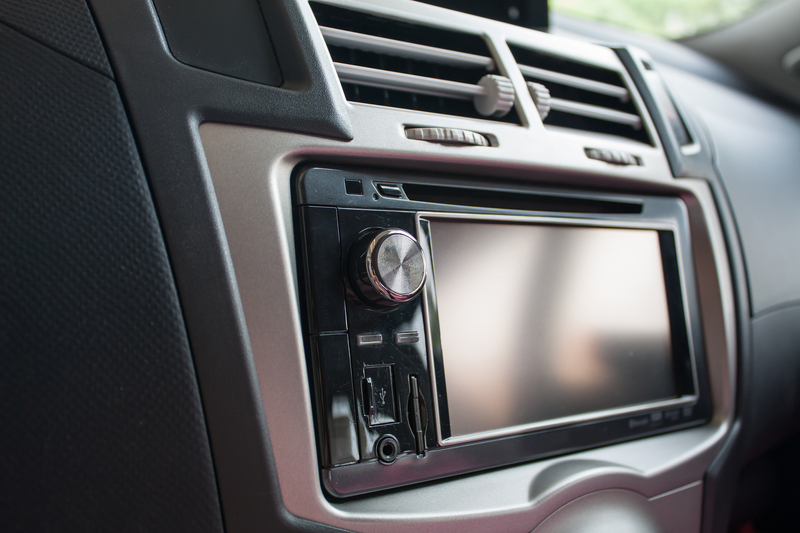Ultimate Guide to Lifting Heavy Objects Alone
Posted on 22/05/2025
Ultimate Guide to Lifting Heavy Objects Alone
Lifting heavy objects alone can be a daunting and risky task. Whether you're moving furniture in your new home, rearranging your office, or tackling a massive DIY project, understanding the best practices and safety considerations is crucial to avoid injuries and damages. This comprehensive guide will provide you with actionable tips, expert advice, and essential equipment suggestions for lifting heavy loads by yourself safely and efficiently.
Why Safe Solo Lifting Techniques Matter
Unsafe lifting is one of the leading causes of back injuries, muscle strains, and accidental property damage. When you're moving heavy items alone, these risks rise since there's no one to help stabilize the object or assist if something goes wrong.
- Musculoskeletal injuries are preventable with proper technique.
- Using the right heavy lifting strategies keeps both you and your possessions safe.
- Efficiency in solo moving can save time and money.

Planning Before Lifting Heavy Objects Alone
Every successful heavy object lift starts with planning. Taking precautionary measures can significantly reduce the risk of injury.
Assess the Load
Before attempting to move anything heavy by yourself, make sure to:
- Estimate the weight and size of the object.
- Consider the object's stability--is it awkward or unbalanced?
- Can it be disassembled or unloaded before the move?
- Check for any sharp edges, protrusions, or breakable parts.
Plan Your Route
Nothing is worse than lifting a heavy object and realizing your pathway is cluttered or blocked. Always:
- Clear a path from start to finish.
- Measure doorways, stairs, and hallways to ensure the object fits.
- Look out for slippery surfaces, mats, or obstacles that could trip you up.
- Prop doors open or remove them if needed for more space.
Essential Equipment for Lifting Heavy Loads Alone
Using the right equipment is one of the best ways to minimize risk and make the task more manageable. Here are the most effective solo heavy lifting aids:
Lifting Straps and Harnesses
Lifting straps distribute the object's weight across larger muscle groups, keeping your back safer and freeing up your hands.
- Forearm forklifts and shoulder dolly systems are especially effective.
- Follow the manufacturer's instructions carefully for proper use.
Hand Trucks and Dollies
A sturdy dolly or hand truck allows you to wheel objects rather than carrying them. Their wheels take most of the weight, letting you focus on steering and balance.
- Upright hand trucks are ideal for boxes and furniture.
- Flatbed dollies work well for large, heavy, or irregularly shaped items.
Sliders and Glides
Furniture sliders reduce friction and allow you to slide heavy items over carpet or hardwood floors with less effort.
- Place under each corner or edge of the item you wish to move.
- Homemade alternatives like towels or cardboard can also work in a pinch.
Protective Gear
Always prioritize your safety:
- Sturdy gloves for grip and hand protection.
- Supportive shoes with closed-toes and anti-slip soles.
- Back support braces if needed for additional stability.
Proper Lifting Techniques: Step-by-step Guide
Knowing the correct way to lift heavy objects on your own minimizes strain on your back, shoulders, and knees. This step-by-step guide will help you move nearly anything safely.
1. Warm Up First
- Gently stretch your arms, back, and legs to promote blood circulation.
- Focus on the lower back, hamstrings, and shoulders.
- Perform light aerobic movements, like walking in place, for 3-5 minutes.
2. Stand Close and Centered
- Position yourself as close to the item as possible.
- Keep your feet shoulder-width apart for optimal balance.
- Maintain a straight back throughout the process.
3. Bend Your Knees, Not Your Waist
- Squat down by bending your knees and hips--never your back.
- Grip the object firmly with both hands.
- Keep your head up and look forward.
4. Use Your Legs to Lift
- Push up through your heels and legs.
- Keep the load as close to your torso as possible.
- Do not twist your body while lifting or setting down the object.
5. Take Small Steps and Move Slowly
- Avoid sudden movements that can jolt your body or shift weight unexpectedly.
- Pivot with your feet to turn, rather than twisting your back.
- Pause if you feel any strain or discomfort.
6. Set Down the Load Safely
- Bend your knees and hips, keeping your back straight.
- Lower the object gently and steadily to its new resting place.
- Release your grip only when the object is fully supported.
Top Safety Tips for Moving Heavy Objects Solo
To further minimize risk while lifting heavy loads without help, always observe the following safety practices:
- Know your limits. If something feels too heavy, don't risk it--get assistance or use mechanical aids.
- Take frequent breaks to avoid fatigue.
- Hydrate and stay energized, especially during prolonged moving sessions.
- If lifting awkward shapes, test the balance before fully committing.
- Use ramps or leverage when moving items up or down stairs.
- Communicate your plans to someone else if possible, for emergency awareness.
- If something starts to slip, let it go--protect yourself first.
Effective Techniques and Strategies for Lifting Heavy Things Alone
Disassemble Whenever Possible
Reduce weight and bulk by removing drawers, shelves, or detachable parts. This makes objects lighter and easier to handle solo.
Leverage Natural Rolling or Sliding
For items with wheels--such as carts or rolling cabinets--unlock casters and push instead of pulling, which offers more control.
Rolling and Tipping
If an object can't be picked up in one go, tip it onto its edge or corner and pivot, rolling across one apical point.
The High-Low Method for Stairs
When taking heavy objects up or down stairs alone:
- Place the lower end of the item on the next stair down (or up), maintaining stability.
- Lift and slide the higher end to the next step, moving one stair at a time.
- This reduces strain and minimizes the need to carry the full weight at once.
Utilize Ramps Whenever Possible
Portable ramps can turn tricky stairs, curbs, or thresholds into manageable inclines.
Push vs. Pull
Common Mistakes to Avoid When Moving Heavy Objects Alone
- Twisting or rotating your torso while holding weight.
- Trying to lift more than your body can handle.
- Rushing--take your time to avoid accidents.
- Wearing sandals or open-toed shoes.
- Lifting with your back instead of your legs.
- Not asking for help when truly needed.
How to Protect Yourself and Your Property
- Cover furniture and appliances with blankets or pads to avoid scrapes.
- Use corner guards on walls.
- Lay down drop cloths to protect floors from drag marks or dropped items.
- Always have a charged phone handy in case of emergency.
Frequently Asked Questions About Solo Heavy Lifting
How much weight can I safely lift alone?
Most health and safety guidelines recommend that individuals shouldn't lift more than 50 pounds (23 kg) alone. However, this depends on your physical fitness, the shape of the object, and your lifting technique. When in doubt, prioritize safety!
Are there any exercises to help prepare for solo heavy lifting?
Yes! Exercises that strengthen your core, legs, and back significantly reduce injury risk. Key movements include:
- Squats
- Deadlifts with light weights
- Planks
- Farmer's walks
- Stretching for flexibility
What should I do if I feel pain while lifting?
Stop immediately, set the object down safely, and assess your body. If pain lingers, seek medical attention. Masking pain and continuing to lift can lead to more serious injuries.
Can I move appliances or large furniture by myself?
Some appliances and large furniture can be moved solo, provided you use equipment like dollies, sliders, or lifting straps, and follow all recommended safety precautions. Never attempt to move anything alone if unsure of your abilities or risks.

Lifting Heavy Objects Alone: Pro Tips for Success
- Practice with lighter items to master your technique before tackling truly heavy loads.
- When possible, break down your move into smaller, sequential tasks.
- Invest in high-quality moving equipment--cheap alternatives can fail under stress.
- Don't be afraid to call in professional movers for extremely heavy or delicate items.
- Remain patient; careful planning and execution always beat rushing.
Conclusion: Mastering the Art of Lifting Heavy Loads Alone
Whether it's a major relocation, a renovation project, or simple at-home rearranging, lifting heavy objects alone requires equal parts smarts and strength. By planning ahead, using the correct techniques, and employing proper tools, you can protect your back, safeguard your belongings, and enjoy the satisfaction of achieving hard physical jobs by yourself. When in doubt, always put safety first--and remember, knowing your limits is the real sign of strength.
Are you ready to tackle your next challenging move? Use this ultimate guide for lifting heavy items alone as your step-by-step resource for safer, easier, and more efficient heavy lifting every time.







